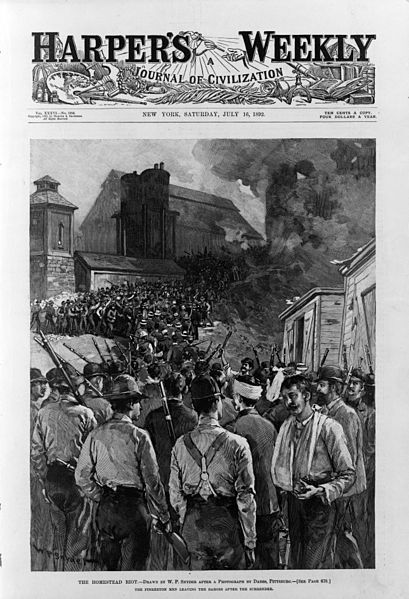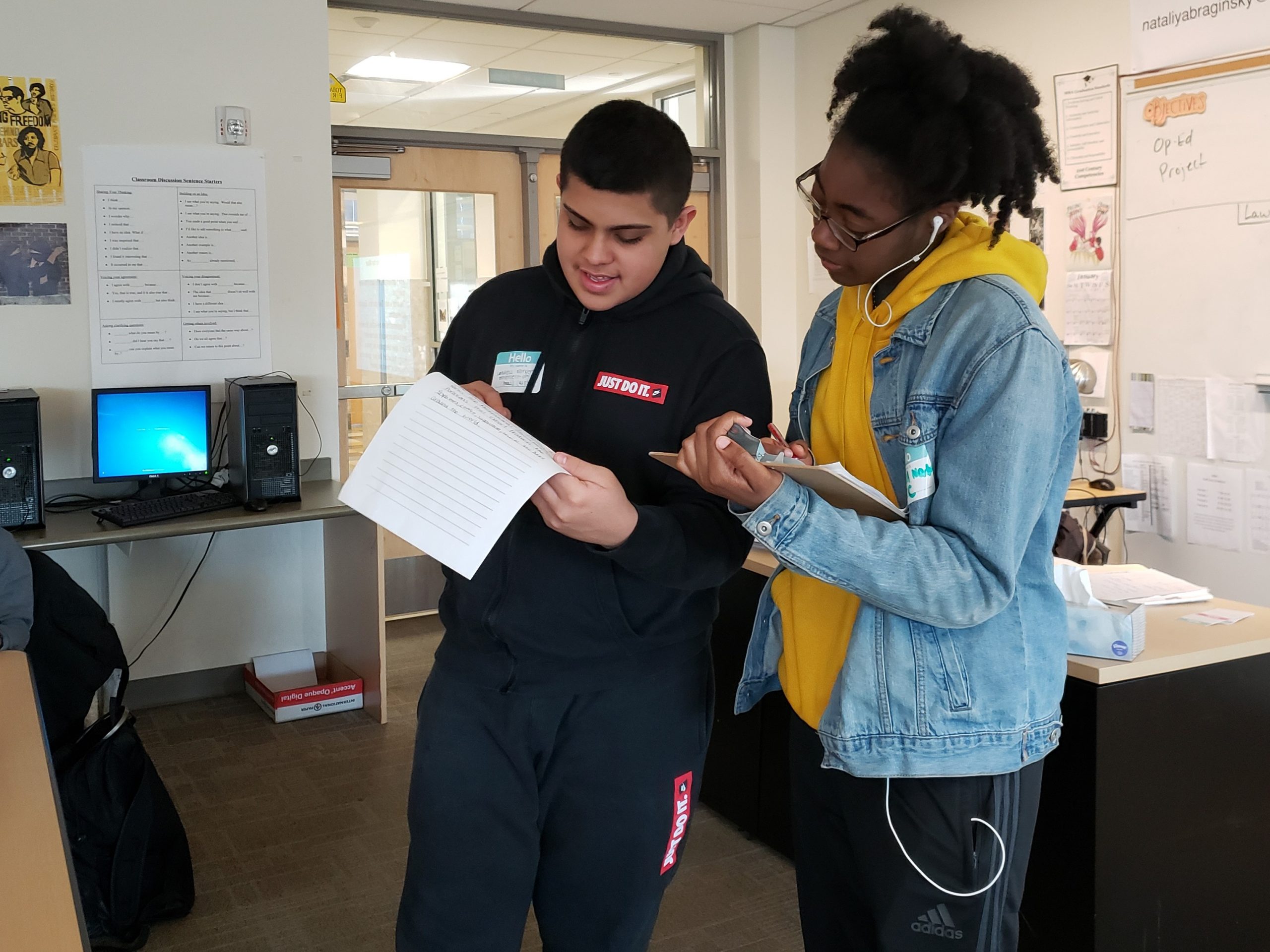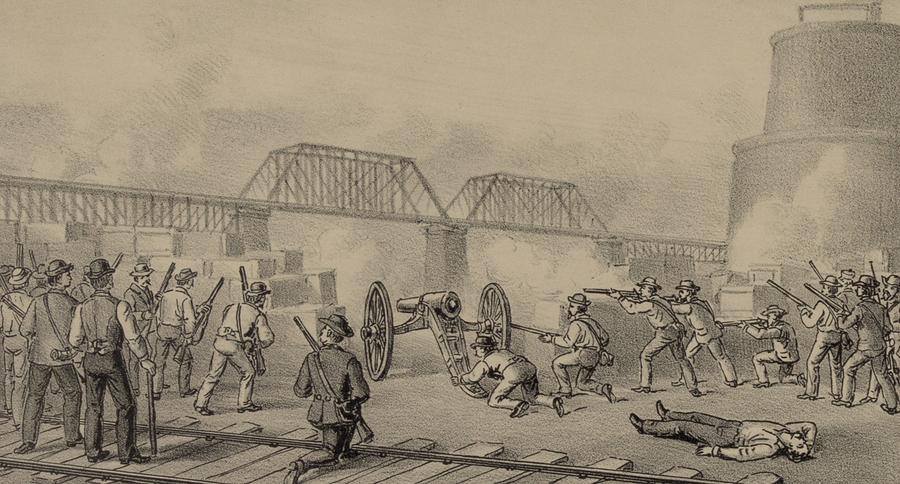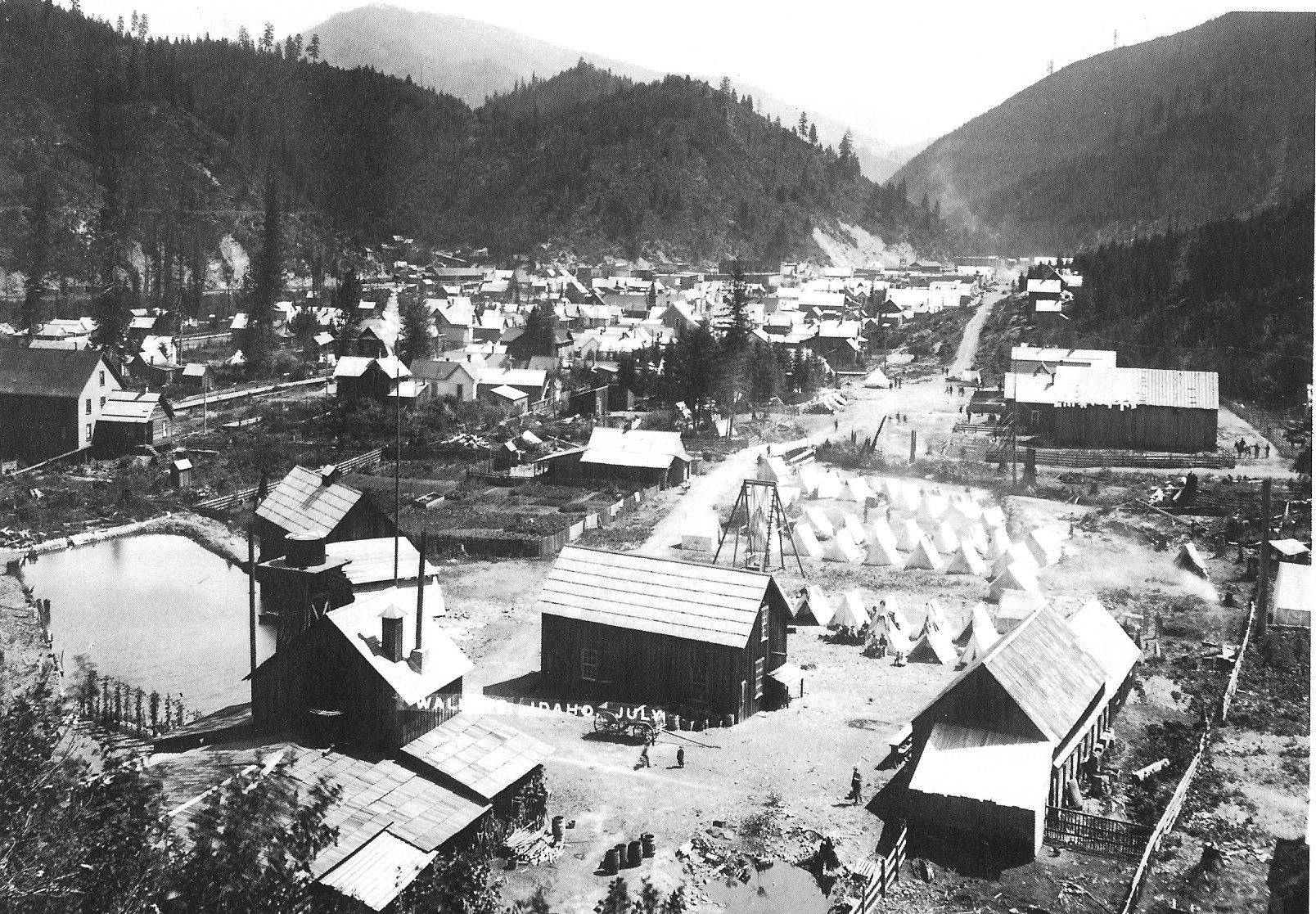
The Pinkerton men leaving the barges after the surrender. Harper’s Weekly, July 16,1892. Source: WikiCommons
Students are often skeptical about the possibility of people genuinely working together when at least their short-term interests appear in conflict. The Homestead Strike is a historical test case that may challenge their skepticism. In this widely used lesson, students become participants in one of the most famous strikes in U.S. history, the 1892 strike in Homestead, Pennsylvania. They begin to explore some of the themes that are important in understanding the relationship between workers, owners, and government, after the 19th century: different types of unions; the role of government intervention; new capital formations that stimulated industry-wide organization among workers.
Classroom Stories
Battle of Homestead today- students’ favorite parts seem to be when the tugboat Little Bill pulls the Pinkertons up the river and of course Berkman’s hapless assassination attempt. Such a great activity from @ZinnEdProject pic.twitter.com/QEevNyR8ud
— Amelia E Serafine (@AmeliaESerafine) January 31, 2019
I have used the Homestead Strike lesson in both my U.S. history and political science courses. Students evaluated the difficulties faced by skilled and unskilled workers. The students followed the steps in the lesson as we divided into the main groups and completed the supplemental readings and tasks. Additionally, we created a simulation related to the scenario as the student speakers explained the point of view of each respective group.
As they examined the issues unique to Homestead, we also examined modern difficulties faced by those attempting to create unions at workplaces such as Amazon. Along with the localized examination within the facilities, we also examined the history of unions and the political decisions and exploitation of workers (and unions) for political gain. This is such a great foundational lesson reflective of the time period and the connections that we can make to the present moment.
The Homestead Strike is one of the 16 labor history lessons available for free download from The Power In Our Hands.











Twitter
Google plus
LinkedIn